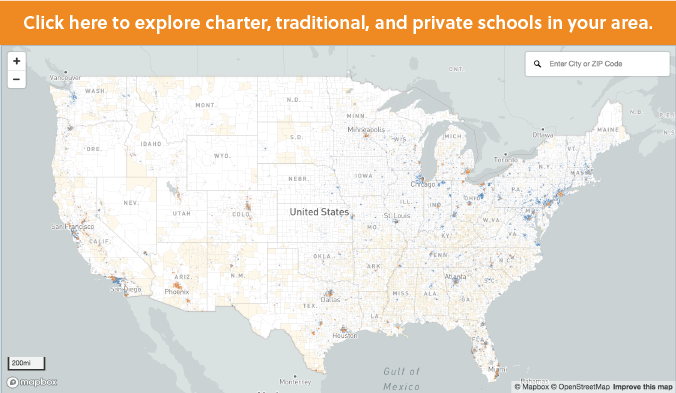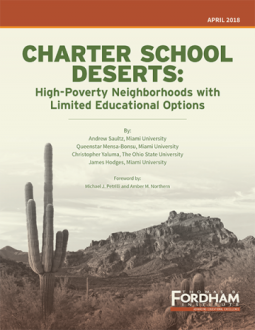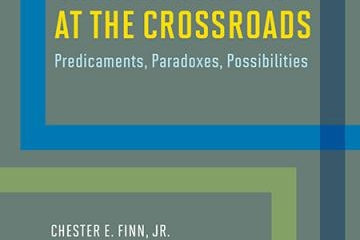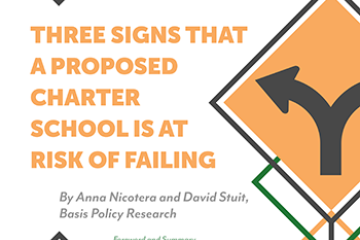2016–17 was one of the slowest-growth years for charter schools in recent memory. Nobody knows exactly why, but one hypothesis is saturation: With charters having achieved market share of over 20 percent in more than three dozen cities, perhaps school supply is starting to meet parental demand, making new charters less necessary and harder to launch. If so, perhaps it’s time to look for new frontiers, especially if we want more children to enjoy the benefits of high-quality charters.
One option is to start more charter schools in affluent communities, which we surely support. But we couldn’t help but wonder: Are we overlooking neighborhoods in America that are already home to plenty of poor kids, and contain the population density necessary to make school choice work, but lack charter school options? Especially communities in the inner-ring suburbs of flourishing cities, which increasingly are becoming magnets for poor and working-class families priced out of gentrifying areas?
That’s the question that this report and its accompanying website address. The study, led by Miami University (of Ohio) Assistant Professor Andrew Saultz, analyzes the distribution of charter elementary schools across the country to provide parents, policymakers, and educators with information about which high and medium poverty communities do not have access to charter schools today.
Saultz and his team defined “charter school deserts” as areas of three or more contiguous census tracts with moderate or high poverty and no charter elementary schools. They find that thirty-nine of forty-two charter states have at least one desert each—and the average number of deserts per state is a worrying 10.8 (see Table 1). Make no mistake: That’s a lot of deserts—and it’s particularly surprising in states that are home to lots of charter schools.
We draw two key takeaways from these findings.
First, the charter sector needs to move beyond city boundaries. We urge charter management organizations, other school operators, and philanthropies and organizations that boost, assist, and encourage charters, to widen their gaze and consider opening schools in places that haven’t yet been on their radar but whose residents deserve more options.
Second, we must address the policy and practical barriers in some states that keep charter schools from locating where they are needed. In short, if disadvantaged families are increasing in number outside the city, so should the number of philanthropists willing to support them there. We also need elected and appointed officials to adopt more supportive charter school policies, including those that allow these innovative public schools of choice to locate anywhere in the state.
Table 1: Number of charter school deserts by state (2014–15)*
| State | Charter Elementary Schools | Charter School Deserts | State | Charter Elementary Schools | Charter School Deserts | State | Charter Elementary Schools | Charter School Deserts |
| AK | 24 | 1 | IA | 2 | 0 | NY | 225 | 21 |
| AZ | 389 | 13 | KS | 16 | 3 | NC | 170 | 14 |
| AR | 21 | 12 | LA | 113 | 17 | OH | 360 | 34 |
| CA | 874 | 18 | ME | 1 | 4 | OK | 44 | 15 |
| CO | 148 | 8 | MD | 34 | 9 | OR | 88 | 5 |
| CT | 12 | 8 | MA | 96 | 7 | PA | 373 | 17 |
| DE | 54 | 3 | MI | 488 | 21 | RI | 14 | 3 |
| DC | 70 | 3 | MN | 196 | 10 | SC | 41 | 19 |
| FL | 396 | 20 | MS | 1 | 9 | TN | 38 | 22 |
| GA | 92 | 19 | MO | 48 | 16 | TX | 510 | 23 |
| HI | 29 | 0 | NV | 39 | 6 | UT | 121 | 6 |
| ID | 41 | 1 | NH | 10 | 0 | VA | 4 | 9 |
| IL | 67 | 14 | NJ | 138 | 9 | WI | 128 | 12 |
| IN | 52 | 13 | NM | 50 | 8 | WY | 4 | 1 |
| Average | 133.8 | 10.8 |
*Some charter school deserts may be very thinly populated and lack enough families to support a competitive school choice market.






